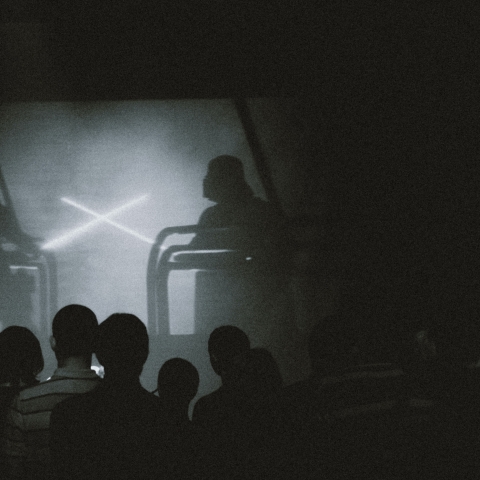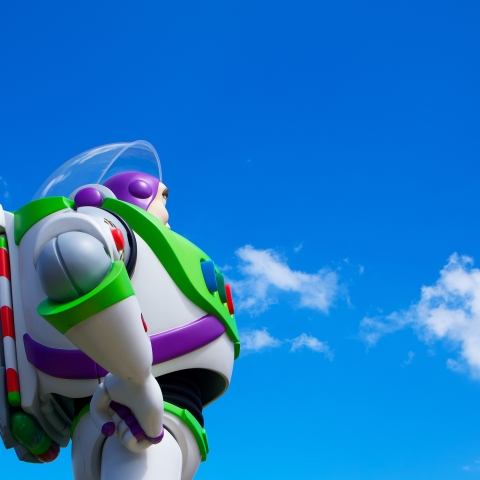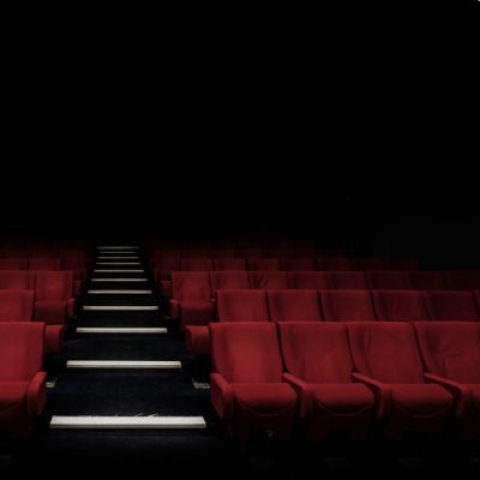

How The Last of Us bucked the trend for failed video game adaptations and instead added depth to a much beloved game.
5 min read
Warning: this article contains spoilers.
From the widely panned Super Mario Bros. movie (1993) to Netflix’s Resident Evil (2022) releasing to decidedly mixed reviews, game adaptations have historically been cursed on both big and small screens.
HBO’s series based on the hugely successful PlayStation game The Last of Us, is the latest entry into this genre. Early indications from critics and viewers suggest it has broken the dreaded video game curse.
The series occupies a unique position. In 2013, when the game was released, post-apocalypses were incredibly popular science fiction worlds. In 2023, such pandemics, as we’ve discovered, hue closer to science fact.
The scene in which protagonists Joel and Ellie encounter a mass grave has a distinctly different impact when humanity has so recently had to grapple with such tragedies in the real world.
The Last of Us trailer
Trailer for HBO’s The Last of Us.
NEIL: A lot of the conversation that Craig Mazin and I had, we would talk through a sequence like that and talk through all the beats.
What do we get out of those beats? Why are they important?
Well, let's just get that wholesale into the show.
CRAIG: I think Neil and I were both excited by the idea that we could actually add a little bit more context to Joel and Sarah's relationship.
"This is your chance."
"You keep her alive."
NEIL: So with the show, we could say, okay, what's important in the sequence, was like, well, we want to show the bonds of the family.
Are there more ways of showing that that we couldn't in the game because we could take more time.
Like, let's show them waking up. Let's show them having breakfast.
Sarah going to school. Sarah going to get her dad's watch fixed.
ERICK: We shared a lot of the concept art from the original game and and the remake with them.
And they used a lot of it very faithfully...
...to make the fans that were playing the game feel like they were being true to the material.
"If you don't think there's hope for the world, why bother going on?"
NEIL: So the beginning of the game was one of the last things we got finalized when we were making The Last of Us.
For a long time, the plan was to play Joel, not to play as Sarah.
And it was like you, as Joel, would hear a commotion over at your neighbour's house.
You would walk over there. You'd see they're infected.
Then you'd head back and grab your daughter and then run.
And it felt...
...like I've seen this.
And the aha moment when we were having a brainstorm in like one of the design pods was what if you played as Sarah.
"Hey."
"Scoot."
ERICK: It was very important to build the relationship of Joel and Sarah.
"Here."
"What's this?"
"Your birthday."
ERICK: To show their characters and what kind of people they are and how they live and relate to each other.
"You kept complaining about your broken watch."
"Do you like it?"
ERICK: And then when things change, when things go bad...
"Dad?"
"Daddy?"
NEIL: The fact that you're seeing it through a very innocent child made everything creepier, scarier.
"You in here?"
PHIL: The quiet sounds mixed with -- Like the TV was loud.
"There seems to be some commotion..."
PHIL: Once the window, the explosion shook the room.
[gunshot] "Oh, God."
PHIL: Everything was there to create this kind of uneasy tension.
NEIL: These kind of elements of like something is off, something is off until Joel comes in and then has to shoot his own neighbour.
"Jimmy, just stay back!"
"Jimmy, I am warning you."
"Where the hell you been?"
"Do you have any idea what's going on out there?"
"I got some notion."
ERICK: Once you get into the car, you have tension being raised by police cars coming through with all the lights spinning around. The view is very claustrophobic.
Things are just very close to you.
"Army's put up roadblocks on the highway."
BRYANT: You look at a sequence like that.
As the animator, you're like, oh, this is something that you get really excited for. And then you get really terrified that you're doing because it's a big moment.
With doing that, we have to kind of really pull your attention to where we want it to be.
"That's Louis' farm."
BRYANT: We do that with sound. We do that with animation.
We do that with lighting, with fire.
All of that is something that an animator put love and care into to make sure it happens exactly the way you're seeing it.
NEIL: but maybe one of the most important things to show in that drive was the family that's asking for help.
"See what they need."
NEIL: At that moment Joel shows you who he is.
"What do you think you're doing? Keep driving."
"I got a kid, Joel."
"- So do we. - We have room."
"Keep driving, Tommy."
PEDRO: And Joel is somebody, to survive, he has to control his environment to the best of his ability and make decisions based on what keeps them alive.
NEIL: He's gonna do everything he needs to to take care of his daughter.
"Look out!"
PHIL: I think about the entire soundscape.
Everything after the car crash switches from Sarah's perspective to Joel's perspective.
Because then it's a father trying to save his kid.
"Gimme your hand."
ERICK: The infected gets closer and closer and the shadows get longer and longer.
These intense lights just shines towards you.
It settles in into the worst thing possible when you think that you're almost at the finish line.
And then Sarah dies.
PHIL: One of the things that I did to be -- to keep myself from emotion -- and it still gets me emotionally -- available for that, is I actually -- when we temp the sound of Sarah , it was my child.
We knew what was gonna happen.
And so we kind of played into that and made it worse and worse and worse until it was almost a save, and then it's not.
"It's okay, baby, we're safe."
"Got a couple of civilians in the outer perimeter. Please advise."
"Daddy, what about uncle Tommy."
[gunshots]
PHIL: The choices we made were authentic, right.
We didn't want to stray away. We wanted to make it grounded.
"Sarah."
[crying]
"Move your hands, baby ."
"I know, baby, I know."
PEDRO: It's very powerful to have such a specific beginning to mark and shape the identity of the character thereafter for the rest of the game and for the rest of the show.
NEIL: the simplicity of Sarah's death was actually really hard to get to.
And we we worked at it so hard.
Hannah Hayes who played Sarah did such a fantastic job.
She was so believable as like a child dying.
I remember that we had a few crew members that walked off set.
They felt it was too much to watch. That happened multiple times.
CRAIG: We have great actors, Pedro and Nico, just do this heartbreaking job.
I love the game version and I love this version.
They live equally in my heart.
"Sarah."
"Baby."
"Don't do this to me, baby. Don't do this to me."
PHIL: Always accessible, always readable, always raw.
And I think to try and be honest to that as much as possible was a huge push.
"Please, please, please don't do this."
"Please."
In the series, a child’s blanket links this scene to a flashback of mass evacuation in the wake of the Cordyceps (the fungus that evolves to infect humans) outbreak foreshadowing the series’ continuing exploration of the values of family, connection and community.
Love in the time of Cordyceps
The Last of Us game released in 2013 among what critics have called the “dadification” of games – a period in which many releases focused on paternal protagonists.
This “dadification” was driven partly by maturing technology that allowed more complex stories to be told. Also, developers who had grown up playing games were maturing and starting families, including The Last of Us creative director Neil Druckmann.
The kinds of stories they wanted to tell matured too, resulting in games addressing parent-child relationships, including The Walking Dead (2012) and God of War (2018).
The theme of parenthood is prevalent in The Last of Us too. While Joel and Ellie’s relationship makes this clear, this theme extends to other characters including Joel’s brother Tommy, an expectant father. HBO’s adaptation takes this a step further by also briefly exploring Ellie’s connection to her mother.
The value of parenthood in the game unfurls into the show’s focus on family. Dialogue throughout the series reflects its importance: Joel reminding Tommy of their familial bond, a scientist who just wants to be with their family, the dying teenage bandit pleading to be returned to his mother.
The value of family extends to supporting characters who are exclusive to, or expanded upon in, the series. Brothers Henry and Sam share a bond in the series compared with the game’s portrayal of a surrogate parent-child relationship that complements Joel and Ellie’s.
The series further extends the game’s exploration of family by having Henry and Sam’s story intersect with new character Kathleen. The leader of the Kansas Quarantine Zone resistance movement, Kathleen has her own motivations surrounding her brother.
A gamechanging adaptation
While family is a core concern of the show, the theme of connection is also explored. This can be seen in its many “found” families. Joel and smuggling partner Tess’ relationship gets more screen time than in the game, as does the short-lived Joel-Tess-and-Ellie family dynamic.
This extends to the series’ other couplings, from episode-length explorations of Joel’s friends and existing game characters Bill and Frank, to Ellie’s relationship with school friend Riley, to Firefly leader Marlene’s connection to Anna – a best friend with a pivotal story role.
Even the Cordyceps is not immune to the rhetoric of connection. The spores by which the fungus spreads in the game have been changed to fungal tendrils in the show. These tendrils connect all the Infected – the series’ version of zombies.
Step on a tendril in one place and you’ll wake a dozen Infected in another. The fungal spores in the game are an impersonal, environmental hazard. The series’ tendrils instead actively seek out new victims and in one unsettling scene, defile a fundamental act of human connection and love to achieve this.
What it means to be human in a world ravaged by a pandemic is also explored. The politics of peaceful communities is examined, from the militaristic Quarantine Zone where Joel first meets Ellie, to Tommy’s settlement – jokingly but truthfully derided as “communism” by Joel.
More important, perhaps, is the exploration of hostile communities that game players would typically shoot their way through. Kathleen’s control of the Kansas resistance group is given a two-episode arc that ends with Joel and Ellie burying Henry and Sam – a humanising end to their story the game did not afford.
The notion of burial as a human ritual is unearthed again a few episodes later when a girl asks in-game antagonist David, the leader of a group at Silver Lakes Resort, if her father can be buried – a request he denies.
The episode explores David and his group, humanising them more than in the game. This further humanisation then stands in stark contrast to a reveal that poses the ultimate question of where the tipping point is between human and monster.
These values are framed in relation to the show’s ultimate theme: love. Joel loved Sarah. Bill loved Frank. Kathleen loved her brother. David’s community loved him. This love, derived from the personal relationships found and strengthened amid chaos, breeds hope not only for the world portrayed in the show but also for our own.
A repeated motif in the series is the motto of the resistance group, the Fireflies: “When you’re lost in the darkness, look for the light.” In a world all too familiar with pandemics in 2023, this masterful adaptation of The Last of Us is something bright indeed.
Adam Jerrett and Peter Howell lecturers in Computer Games Design at the School of Creative Technologies in the Faculty of Creative and Cultural Industries.
This article is republished from The Conversation under a Creative Commons licence. Read the original article.
More The Conversation Articles...
The Conversation is an independent source of news analysis and informed comment written by academic experts, working with professional journalists who help share their knowledge with the world.
How Star Wars’ Jedi were inspired by the Knights Templar
Patrick Masters
7 July 2022
5 min read

Lightyear’s same-sex kiss – the controversy that led to Disney’s first ‘real’ LGBTQ+ representation
16 June 2022
7 min read

Flee: animation is a powerful medium for documentaries about conflict and refugees
16 February 2022
6 min read

